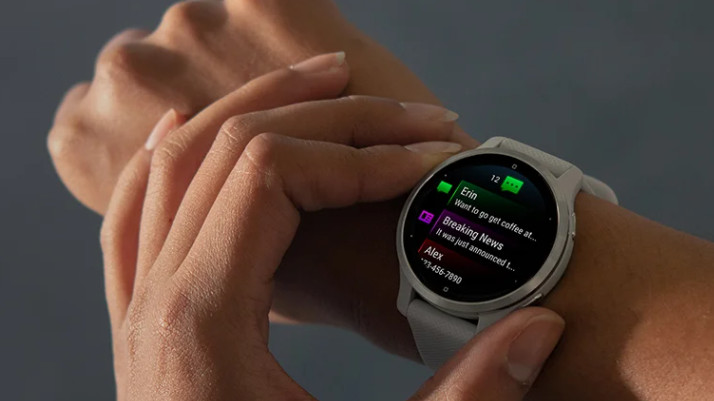How to choose a running watch
Eight top tips for choosing your next running mate

If you’re in the market for a running watch to help with your 2022 fitness goals, then you’re at the cutting edge of fitness wearables. The best running watches are among the most technically advanced, most impressive and priciest wearables around. We’re talking GPS, biometrics and apps that offer artificial intelligence-driven insights into the data you clock up.
However, with so many running watches available it can be difficult to make the right decision. You might already have a pair of the best running shoes, but here’s how to choose the right running watch for you.
1. Know exactly what a running watch is
We’re not counting steps here. That’s for smartphones, smart watches and fitness trackers that are more about casual encouragement and looking good. Running watches – also referred to as GPS watches and multisport watches – must be altogether more obsessed with accuracy and performance. Cue GPS-powered location-tracking that removes the guesswork for calculating distances, and a host of sensors to measure biometrics.
Heart rate monitoring is by now a default feature that helps you exercise at the right intensity while an incoming feature is a measurement of blood oxygen (SpO2) levels. The latter is nice to have as a general measurement of fitness, but only of practical use on the move if you’re going to be hiking or climbing at high altitudes, or free diving, though marathon runners may also find it handy.

Almost all running watches support multiple activities, but many higher-end running watches also feature dedicated triathlon modes, which track entire events without you having to record the bike ride, swim, and run separately.
2. Think about what kind of athlete you are
Do you need a running watch? If you go for the occasional jog and just want to keep track of how much you move, think about investing in a fitness tracker or a smart watch. If, however, you’re a regular runner, cyclist or triathlete and are hell-bent on improving then a running watch is for you.
What you’re likely to notice if you’re stepping-up from a Fitbit or a smartphone app to a running watch is data. In place of the simple algorithms, step-counting and an obsession with reaching 10,000 steps you’ll find multi-sport modes, cadence sensors, stride length calculators, heart rate monitors and compatibility with third-party sensors like chest-strap heart rate monitors and foot pods. Running watches that are focused all and only on running include the insight-packed Coros Apex and the Polar Vantage V2, the latter of which adds a regular fitness test to establish your benchmark.
Sign up for breaking news, reviews, opinion, top tech deals, and more.
3. Understand the value of GPS and alternatives
Do you know where you are with navigation? GPS has become a byword for satellite navigation, but the US-built Global Positioning System is but one of several around the world.
They all work the same way, with a receiver inside a running watch tuning-in to radio signals from networks of orbiting satellites. Using signals from four satellites a receiver can triangulate to produce your position on the planet every few seconds and to within a few metres.
You’ll often see running watches advertised as being compatible with GLONASS (Global Navigation Satellite System), which is a Russian-run system that’s slightly more accurate than GPS, the EU-owned Galileo, Japan’s QZSS (Quasi-Zenith Satellite System) and China’s BDS (BeiDou). You don’t need a running watch that supports all of them, but it’s wise to have access to two satellite systems because more satellites will be available at any given time.

Why does a running watch need satellite navigation? Although many have maps and wayfinding features, it’s primarily to track exactly how far you’ve run. It’s way more accurate than the algorithms used in fitness trackers. The drawback, of course, is that satellite navigation requires considerable battery power, so if that’s your biggest concern then get a running watch that offers power saving modes, though understand that they do reduce accuracy by less frequently picking-up the signals from navigation satellites.
4. Get to know the big brands
The big players in the multi-sports watch genre include brands like Garmin, Polar, Suunto, Coros and Amazfit. However, even within these brands are some drastically different products that are priced accordingly. For example, Garmin’s flagship is the Garmin Forerunner 945 and will suit most runners very well, though the much pricier and chunkier Garmin Fenix 6 is the best choice for anyone also indulging in hiking, swimming and skiing. So is the Coros Vertix, which can survive freezing conditions and lasts 60 hours in GPS mode.
You can just about squeeze in Fitbit and Apple, too, though the Fitbit Charge 4 and Apple Watch 6 – while good for beginners – lack the advanced tracking metrics of a ‘proper’ running watch.

5. Consider battery and brightness
Battery life is also important since incessant recharging between workouts can get irritating. Can your running watch recharge via the same USB-C cable you use for your smartphone? Or are you going to have to introduce an ugly (and highly lose-able) proprietary charging cradle into your digital life? Choose accordingly.
A direct consequence of battery life is how much its satellite navigation mode sucks that battery dry, and also how bright the display can go, which is crucial in sunshine. While some running watches offer bright backlit AMOLED screens others have transflective memory-in-pixel (MIP) tech, which boosts brightness on a sunny day. Some running watches – like the Garmin Instinct Solar – use photovoltaic glass to give them a solar power boost.
6. Size up the physical differences
Running watches do not all look the same and nor do they feel the same when being worn on your wrist. For starters, they differ in weight, with the lightest running watch being the Coros Pace 2 at a mere 29g. It’s also worth thinking about the overall design because although a running watch sounds like a device to strap to your wrist only for workouts, the reality is that it will become your de facto wristwatch, too.
It’s also worth considering that although touchscreens are often found on consumer smart watches, physical buttons are much easier to operate while moving. That’s particularly true if you’re wearing gloves while running in winter.

7. Think about your data and how it’s handled
There are two sides to the data produced by a running watch: what you see on the watch face during your run to keep you informed of your progress and on-target, and the data provided afterwards to aid you in tracking your progress and planning your future workouts. The latter is down to apps, which tend to record your running metrics and plot your recovery status. You’ll also find artificial intelligence-powered apps that manage your training load. Even more important for runners who have been using apps like Strava or MyFitnessPal for years is that your running watch allows its data to flow into them, too.
8. Check for any extra features
Most running watches go beyond their core remit. For example, some Garmin running watches include offline music support, Spotify control support and pairing with wireless headphones, menstrual cycle tracking offline, maps and and even Garmin Pay so you can swipe yourself a cold drink on the warm-down walk home.
Smartphone notifications – such as WhatsApp messages and social media updates – can be funnelled into many running watches, which you may either desperately want or be keen to completely avoid.

This article is part of TechRadar's Get Fit in 2022 series – a collection of ideas and guides to help get your new year's health goals off to the right start, whatever your current level of fitness.
- We've also tested and ranked the best swimming watches

Jamie is a freelance tech, travel and space journalist based in the UK. He’s been writing regularly for Techradar since it was launched in 2008 and also writes regularly for Forbes, The Telegraph, the South China Morning Post, Sky & Telescope and the Sky At Night magazine as well as other Future titles T3, Digital Camera World, All About Space and Space.com. He also edits two of his own websites, TravGear.com and WhenIsTheNextEclipse.com that reflect his obsession with travel gear and solar eclipse travel. He is the author of A Stargazing Program For Beginners (Springer, 2015),